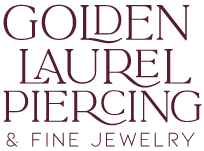Considering the wealth of options available for nearly every product nowadays, shopping can feel rather overwhelming, no matter what you’re shopping for. Body jewelry is no exception to this, but because it is worn inside of the body vs. on the body like traditional jewelry and other accessories, there is even more to consider. Wearing jewelry that is not suitable for your piercing can negatively impact its health, even if the piercing is established. So, how can you find and choose the proper jewelry for your piercing? What exactly needs to be considered?
First, it is important that body jewelry is made from materials that have been deemed safe to be worn in the body. Steel, titanium, niobium, solid gold, platinum, and glass are all materials that can safely be used for body jewelry. However, is important to note that these materials must be of a certain grade to be body safe – “implant grade.” Simply put, that means that it is made from biocompatible materials and is safe for long-term wear in the body. Just because a piece of jewelry is made from one of those materials does not necessarily mean it is implant grade. The materials from which the jewelry is made must be tested and proven to be safe for the body. The Association of Professional Piercers (APP) provides additional information on this page about exactly what determines the grade of metals and alloys, how the implant grade designation is reached by different organizations, and then how it can be verified by consumers.
Beyond material, the style and size of body jewelry is also important. “Style” in this context refers to the shape of the jewelry – i.e., rings, straight bars, and curved bars. Some piercings can be safely and comfortably fitted with more than one style, while others cannot. This can vary between individuals and their anatomy, too. Size is similarly variable, if not more so. There are two components to body jewelry size: gauge (thickness) and length/diameter. Appropriate jewelry size differs based on the piercing, location and placement, as well as individual anatomy. For example, one client’s healed navel piercing might have a 12g 7/16” curved barbell in it, and another client’s healed navel piercing might be fitted with a 14g 5/16” captive bead ring. These sizes and styles are not interchangeable. A 14g 5/16” captive bead ring would not fit in the first client’s piercing, and vice versa.
Does knowing about any of this stuff make shopping for body jewelry less overwhelming? Maybe, maybe not. It might help to easily eliminate some obviously unsuitable products from the shopping pool, but it also could raise a new set of concerns to become overwhelming… Will this style of jewelry fit my piercing? How do I know this is implant grade? What size do I need? The information provided in the previous two paragraphs is intended to be helpful and offer some guidance in knowing what to look for, but it is heavily simplified and condensed. Ultimately, the easiest way to know that you’re getting quality body jewelry that is appropriately fitted to your piercing is to visit a reputable body piercer. They can provide verification that the jewelry they offer is implant grade, assess your anatomy to determine the best style and fit, and answer any additional questions you might have, hopefully making the shopping experience much easier and less stressful for you.

